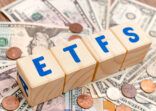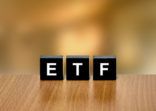Jackie Choy, Morningstar
ETFs are commonly known as passive investment products, designed to track the performance of an index or benchmark. But actively managed ETFs also exist, even though they are still a novelty. They are equivalent to mutual funds whose units are traded on a stock exchange.
Even in the US, which is the largest market for active ETFs, they account for only 1% of the country’s $3trn ETF market, noted Jackie Choy, director of ETF research for Asia at Morningstar.
While still a niche product, active ETFs are growing fast. ETFGI data show that the AUM in active ETFs listed globally increased 44.9% in 2017 to reach a new record of $63.6bn as of the end of September. The US is the largest market, with $40.9bn in assets, followed by Canada ($10.37bn), Europe ($8.33bn) and Asia Pacific ex-Japan ($3.91bn).
Many jurisdictions still do not allow listing of active ETFs on their exchanges. In Asia-Pacific, only Korea and Australia do, Choy told FSA.
While Hong Kong’s Securities and Futures Commission (SFC) allows only passive ETFs today, it recognises a growing interest in active ones from investors and issuers. On 18 December it launched a three-month consultation on whether to introduce these products in the territory.
Transparency
Transparency is one of the main advantages of ETFs, but also the main reason why actively managed ETFs have not taken off, according to Choy.
“Passively managed ETFs give out the portfolio information on a daily basis,” he said. “For active funds, the weighting of individual investments is the secret source of alpha of a fund manager.”
If active ETFs had to disclose their portfolio on a daily basis, individual investors could easily copy them, Choy explained. Normally, actively managed mutual funds only disclose their portfolio holdings on a quarterly basis.
This issue is less relevant for fixed income ETFs, whose portfolios are more difficult to replicate, Choy added. This is why in the US, fixed income is more popular in the active ETF space than equities. “Bond managers are more willing to give out their portfolios than equity fund managers,” he said.
Regulators in some markets require full portfolio disclosure of all ETFs on a daily basis, while others permit the disclosure only to participating dealers and market makers, ahead of the public.
The desire to protect active managers’ ability to keep their strategy secret has led the US industry to create structures where fund managers could hide their portfolio while satisfying the SEC’s disclosure requirements, Choy added.
The SFC observed that imposing the public disclosure of the full portfolio on a daily basis appears to have hindered the growth of active ETFs. It is considering taking a more relaxed approach to transparency with its proposal.
“We believe that it would be in the public interest not to require full portfolio disclosure to the public on a daily basis while allowing the provision of portfolio information to participating dealers and market makers ahead of the public,” the consultation paper stated.
Distribution opportunities
Active ETFs create more distribution opportunities for fund managers, noted Choy.
“For normal mutual funds, the [most popular channels in Hong Kong] are either selling through banks or independent financial advisers. Launching active ETFs could be another distribution channel for them.”
End investors may also benefit from investing into active ETFs. “It depends on the actual arrangement for how much active ETFs will charge. But if all fees are equal, it will be cheaper to buy a fund through the exchange than going through a bank, if the commissions are lower.”
Besides the introduction of active ETFs, other key proposals in the consultation include strengthening requirements for asset management companies as well as providing greater flexibility and enhanced safeguards for funds’ investment activities, particularly in relation to derivatives, securities lending and repo and reverse repo transactions.

















